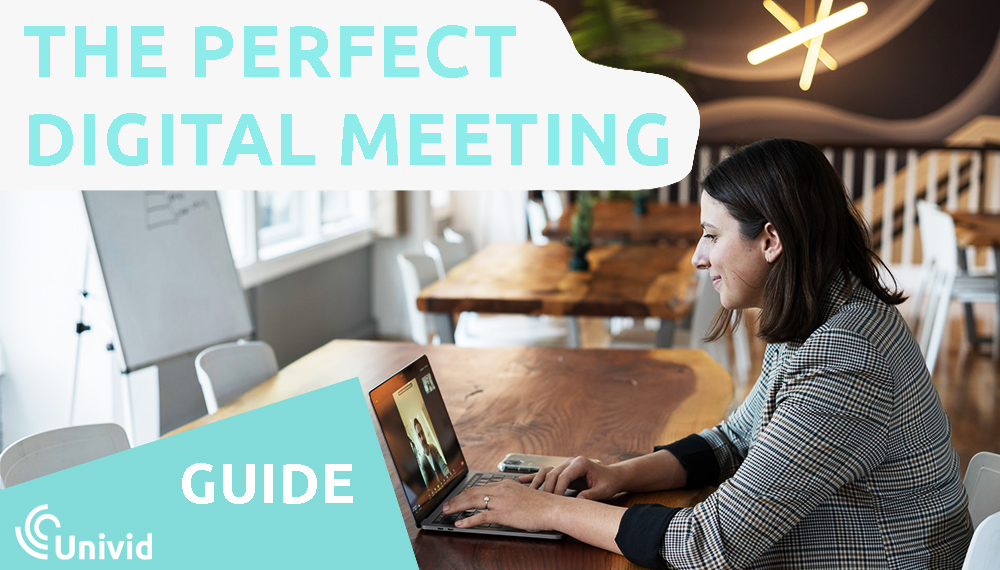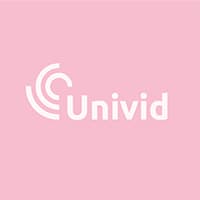Digital meetings - A guide to hosting the perfect meeting
Digital meetings come in many forms - here we will discuss the three main types - video meetings, webinars and livestreams. Also we will provide the recipe for hosting the perfect meeting, looking into both the tools needed and practical tips for hosting an engaging live session.

What is a digital meeting?
A digital meeting can of course be many things - from a classic Zoom meeting where all participants have the camera activated and participate actively, to a large live broadcast with thousands of participants on an event platform where the content is produced in a studio with a schedule and a large number of technicians, moderators and event staff involved. The following three terms are commonly used when talking about different types of digital meetings - video meeting, live streaming and webinar.

1. Video meeting or web meeting
Video meetings or web web meetings is synonymous with video conferencing where everyone usually attends with camera and/or audio. The boundary between presenter and viewer is generally vague, and one can often change roles. At meetings, you rarely have a dedicated moderator, but the word is relatively free and the meeting is led forward by participants themselves.
Regular size: 2-100
Character: Informal, relatively open structure
Broadcasted from: Webcam
2. Livestreaming
A classic live broadcast that usually takes place from a studio, where you broadcast one-way to an audience that acts as viewers. Image quality and scalability are often a high priority here and transmission technology such as RTMP is used, which generally results in a delay of approx. 15-30 seconds. Here you usually work with interactivity that does not mean that participants are in the video, but often it is done in writing via chat, polls, reactions, etc. A so-called event schedule is often used for these broadcasts, where it is clear what will happen, at what time. The timetable is followed very carefully and thus the freedom of improvisation is small in these types of controlled and professional broadcasts - very similar to TV productions, where quality is of the highest priority!
Regular size: 50-2000
Character Formal, structured, and professional
Broadcasted from: Studio
3. Webinar
A webinar is a bit of a mix between a traditional live broadcast and a video meeting. Here, it is usually clearly defined who is the presenter, but at the same time there is usually freedom to involve the participants more, as you rarely follow a complex timetable as for larger live broadcasts. Often these types of broadcasts are held by the presenter himself, with only one webcam; but webinar can also be broadcast from a studio.
Regular size: 10-500
Character Formal, professional, some room for improvisation
Broadcasted from: Webcam or studio
Alternative grouping of digital meetings
You can also group digital meetings and meeting tools such as many-to-many and one-to-many , ie. if they support video from and between all individual participants, or if it is just a video stream straight out as in a traditional live broadcast. Video meetings, web meetings and to some extent webinars are generally of the many-to-many nature. Live streaming is traditionally just a video out to the participants and thus one-to-many. The type of audience and where it is located can also further categorize digital meetings - where, for example, hybrid meetings, with a physical and a digital audience, are a common type of meeting post-COVID.
Enough about definitions, let's take a closer look at tips on how to host really good digital meetings!
What tools are needed for digital meetings?
To host really good digital meetings that impress, of course, requires a high quality of video and sound, which requires good technical equipment. However, small tricks - such as making sure to be well lit - can also drastically increase quality without requiring new equipment. Here are some brief tips on what to think about in terms of video, light and sound in digital meetings.
Video and light in digital meetings
Video is what everyone else sees and of course plays a very big role. Many modern laptops have good webcams built-in, and smartphones often have even better cameras! Do you want to make it even a little more professional, e.g. in a home studio, you can of course use a system camera or similar on a tripod and a software such as OBS to use the video source as a webcam. If you do not have a fantastic camera, it is important to make sure that you are well lit - hardly the best camera can make a person in backlight look good.
If you have the opportunity to sit facing a window, it is a perfect light source that makes you visible from your very best side - evenly and naturally lit. Otherwise, a desk or desk lamp a little behind the computer may be a good option. For those of you who want to take that step further, there are Halo lamps and the like such as. used by Youtubers and a bit more professional studios, these lights really make you pop from the background and look your best at your next meeting, webinar or event!
Sound in digital meetings
You have probably been in a bad meeting where the connection was unstable and the video froze, then you have probably noticed the importance of good sound and how it can make the meeting make or break!
To ensure that the sound volume is sufficient and that disturbing background noise is minimized, it is recommended to use a real microphone or a pair of headphones with a microphone, e.g. Airpods have a surprisingly good microphone!
For slightly larger productions where you want to be sure that all remote participants are really heard and do not have problems with their microphone - it is often recommended to run headphones with a cord, and not Bluetooth.
It can also be an idea to make sure you are sitting in a quiet environment, which does not have disturbing background noise such as fans, doors slamming, people talking in the background, etc. Feel free to record a short test with your meeting tool to hear how you (and your surroundings) sound!

To host digital meetings
The role of host and how you host a digital meeting, of course, depends on the type of meeting in question. In a live broadcast, there is often professional help in the form of technicians, event staff and a timetable that explains in detail what happens when. For video meetings and webinars, it is more free and difficult to plan in detail, but below are 3 general tips that apply to digital meetings regardless of character:
1. Test before the meeting starts
The key to a good digital meeting is to test all technology beforehand, so that the meeting flows on without interruption or annoying stress. If you have a larger meeting with important link participants, make sure that they have tested the platform before, and that they use the same headphones, browser and technology as when you then go live.
Keep track of your meeting tool and its features. Are you going to have breakout sessions? Try to divide people up before, plan out how long participants will be in breakouts and that they know what to discuss. Should you share a screen, test that it works and that you check in the camera and not on your slides - try recording yourself!
2. Make sure to pause
Breaks are super important for a good meeting. Zoom fatigue is a fact and participants often experience that digital meetings become long, lose focus and instead start scrolling on other pages. Thus, it is important to host shorter meetings, divide the meeting into content-rich segments and take frequent breaks. Your audience will be eternally grateful to you!
3. Create dynamics and interaction
Content is important, but so is how you set up your meeting. Plan how you will get the participants involved - perhaps based on which polls you should send out, which people you should distribute the word to, or which discussion questions you should send out before the meeting. Work with the visual in presentations - show do not tell! To create dynamism - work on varying what you show, who is talking and what role the participants should take.

Boundaries are blurred - live broadcasts and video meetings for everyone
Already today, the boundaries between large live broadcasts and smaller video meetings are beginning to blur. Individuals can today, with the help of various meeting tools and platforms themselves, invite, plan, carry out and analyze the digital meetings afterwards; completely without any external expertise.
The technology is developing rapidly, which enables live broadcasts via RTMP with a lower delay. At the same time, real-time technology is getting better and better, which means that larger digital meetings can be held completely without delay.
New features mean that opportunities for interaction in digital meetings are getting better, and that only interacting via video is not as important when you have chats, polls and reactions to be part of as a participant. The fact that the meeting tool and platform used support all types of broadcasts is becoming increasingly important - as a host you do not want to have to limit your format or content according to technical limitations.
The previously complex equipment and software required for professional live broadcasts is also becoming simpler and more accessible. This issimply a great time to hold digital meetings!
